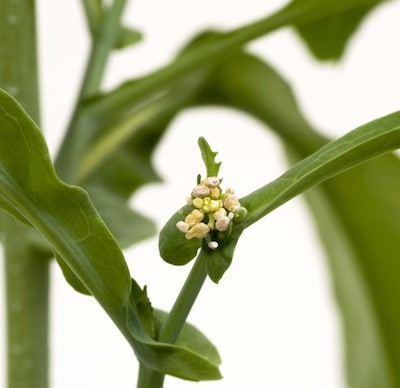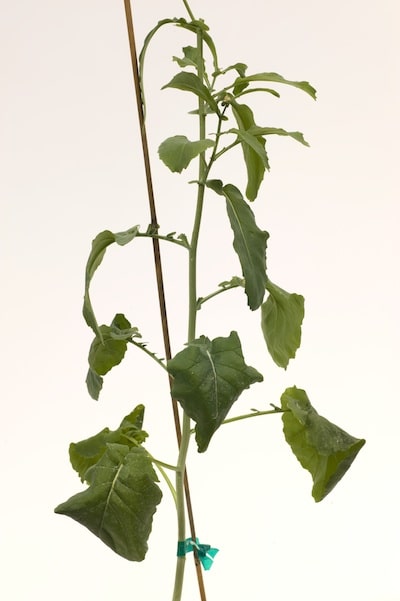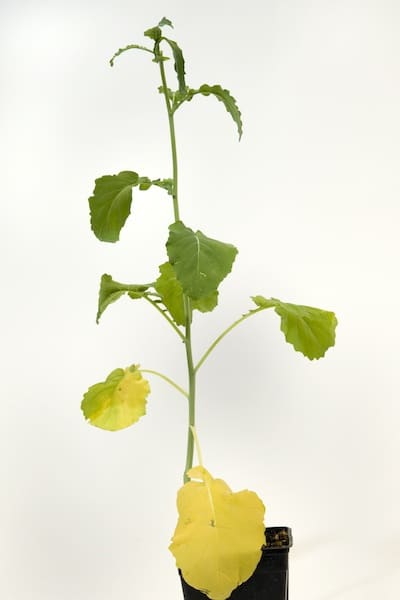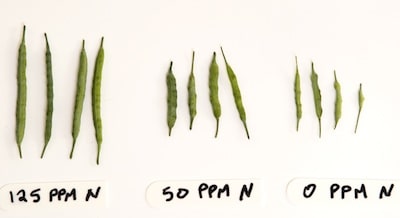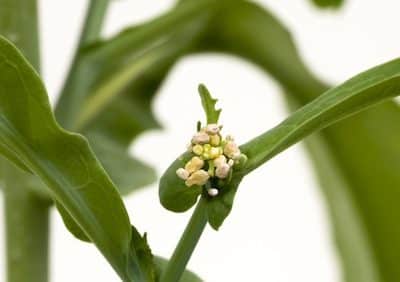Heavy rains can increase nitrogen and sulphur leaching in lighter soils, and increase denitrification in heavier soils. While very good soil moisture conditions may increase canola yield potential, those rains may have depleted the nitrogen reserves somewhat. Top dressing is an option.
Whether top dressing makes financial sense may depend on the conditions of the crop and how much nitrogen was available at the start of the season. If plants are strong and the crop looks good, this crop may provide the best return on investment from a top dress. Before applying, check what rates were applied at seeding or before. If rates were more than adequate for a high-yielding crop, some nitrogen could be lost to leaching or denitrification and not hurt yield potential too much. The healthy crop may also access leached nitrogen lower in the soil profile later in the season. But if rates were reduced in response to rising costs or lower yield outlooks at seeding time, this crop might benefit more from a top dress — especially if it looks in good shape right now.
How much nitrogen could be lost to denitrification and leaching? Growers can expect to see some nitrogen loss from extended heavy rains, probably in the range of 20-50%. Worst areas of the field — the low spots — could lose more of the available nitrogen. However, these saturated areas will have thinned crop anyway, meaning there may still be enough N to feed the few plants that remain.
Top dress products:
Urea: Top dressing urea with Agrotain provides a longer window to wait for rain to move the N into the soil profile where it is safe from volatilization, limiting losses while urea sits on the soil surface. If you know at least a quarter inch of rain is coming within the day, Agrotain won’t be necessary. If rain doesn’t come for a day or so, up to 5% of the urea could be converted to ammonia then nitrate and lost. However, more will be lost if rain doesn’t come for days and days.
UAN: A dribble band of liquid urea ammonium nitrate (UAN) works well.
Ammonium sulphate is a good way to apply N and S if you need both. It provides a wide window of application, with little potential for volatilization loss unless soil is alkaline.
Rather than trying to guess how much was lost, which will depend on rainfall, soil type, residue levels, organic matter — all of which make predicting loss very difficult — watch fields for visible signs of nitrogen deficiency and sulphur deficiency.
Nitrogen deficiencies look like (see photos at bottom):
—Leaves at the bottom of the plant are yellowing prematurely.
—No substantial biomass. Plants are thin and pathetic.
Sulphur deficiencies look like (see photos at bottom):
—Top leaves are small and narrow, and are often cupped.
—Short pods with little or no seed set.
—Pale yellow leaves
—Prolonged flowering if the crop is having trouble setting seed.
—Patchy look to the field. Sulphur is highly variable across a field, so deficiencies will usually show up in patches.
—Sulphur deficiency is more typical in sandy soil with low organic matter.
The ideal time for a nitrogen top up is before the 5-leaf stage, but top ups can be effective if applied after that time. Chances are soil nitrogen levels are enough to carry a crop through the first few weeks of peak growth, which starts after the 5-leaf stage. The top up will provide the nitrogen necessary to carry the crop through to full yield potential later when original reserves are drawn down. Sulphur can be top dressed anytime through to early flowering, but applications after first flower may not rescue full yield potential in deficient situations.
Click here for more tips.
